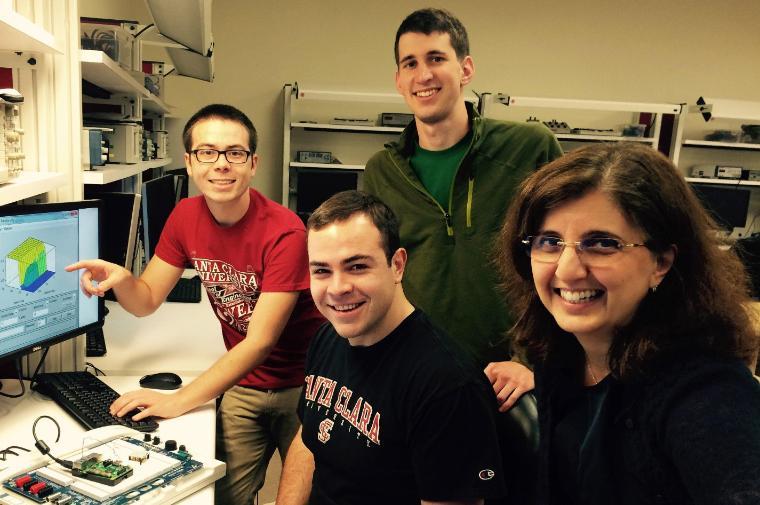
Building A Better Nest
In today's world where our cars, phones, and even items of clothing give and share information as part of the Internet of Things, it may be time to update that old chestnut about building a better mousetrap ... to something along the lines of "build a better thermostat and the world will beat a path to your door." Noticing so much popular attention paid to the Nest Learning Thermostat and facing the challenge of their year-long capstone project, electrical engineering seniors Matthew Allen, Sam Billett, and Kevin Read fixed their laser-like focus on fuzzy logic.
"We wanted to have a thermostat that can think and be more intelligent about when to turn on and off, rather than a normal programmable thermostat that operates according to a weekly schedule," said Read. "We decided to use a fuzzy logic decision-maker inside the thermostat that would not just follow patterns, it would make decisions based on what humans would want to do," added Allen.
Sounds good, except for one problem: they didn't know anything about fuzzy logic. The advanced topic hadn't been covered yet in their undergraduate classes. So they asked electrical engineering Adjunct Lecturer Maryam Khanbaghi for help. Allen: "We said, 'we like you, we like your teaching style, we want you to be our advisor.' She taught us fuzzy logic and gave us the tools to go at the guts." Khanbaghi's industry experience as a highly respected technical expert designing advanced control systems for Corning, Inc., made her a rich bank of knowledge for the team.
"We wanted to differentiate our product from Nest in ways that would be useful and valuable to the customer," said Billett, "so we've incorporated a budget mode that will allow users to specify how much they want to spend on HVAC per month. The thermostat will adjust the temperature to match that figure as closely as possible." The team also implemented a CO2 sensor instead of a motion detector to determine occupancy, improving accuracy while keeping the constant signal their fuzzy logic system needed.
"These guys are courageous to take on a project like this," said Khanbaghi. "They are only a group of three, but they are trying to do something better than Nest and [are] learning technologies that will be very helpful to them as they start their careers."
Summing up the team's experience, Allen said, "Taking on a subject that none of us knew anything about and learning about it has been the best!"